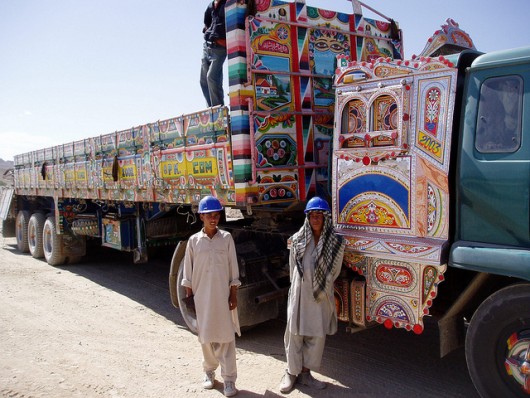Kabul City: On the Road to Improvement

When we think of a “bad road,” often times we conjure an image of driving over narrow, uneven or pot-holed ridden paths, usually in the heart of a city or perhaps out in the middle of nowhere. But what if the main road we traversed in our walk to school every day or commute to work was in a state of even worse condition—unpaved and muddy, invisible beneath a cloud of dust?
For residents living in the Qala-e-Zaman Khan neighborhood in Kabul, traveling on roads which match this description was an everyday occurrence. A five minute walk to school became a 20 minute one, with students changing out of their mud-caked clothing several times a day, while also becoming more susceptible to illness as a result of breathing in the perpetual dust.
Left almost untouched for nearly half a century, the need for infrastructural improvements for roads in the neighborhood of Qala-e-Zaman Khan was dire. Fortunately, with the support of the Kabul Municipal Development Program (KMDP), implemented by the Kabul Municipality, a project to build and pave roads could finally begin.
This program was funded by a grant equaling $110 million from the Afghanistan Reconstruction Trust Fund (ARTF). Established in 2002, the ARTF provides a financial vehicle for the government of Afghanistan’s budget, allowing them to make a significant difference in areas such as education, health, agriculture, rural development, infrastructure and governance.
Aside from improving street conditions, an article from The World Bank states that the KMDP organization has more goals in store.
“KMDP’s objectives are to increase access to basic municipal services in selected residential areas of Kabul city; redesign Kabul Municipality’s Financial Management System to support better service delivery; and enable early response in the event of a relevant emergency.”
Since the creation of newly paved roads in this area of Kabul, the quality of living has improved for its people. Shopkeepers have seen their income double now that dust no longer settles on food. Children don’t dread the mud-splattered walks to school, taxi cabs have reduced their fares and those seeking hospitals save time on the newly constructed streets.
The KMDP plans to reach at least 770,000 people with their services throughout the 1,770 hectares of government-owned land. So far, at least 618 hectares have been improved.
The organization has also funded over 310,000 beneficiaries comprising over 100,000 from upgraded roads and more than 210,000 from trunk roads. At least 76,000 indirect beneficiaries have also benefited, including students and staff of schools and institutions of higher education.
With the construction of asphalt roads in neighborhoods that have only known dust and mud-covered paths, residents embrace the positive outcomes that continue to surface with each new step.
– Nikki Schaffer
Sources: World Bank, ARTF
Photo: Flickr
